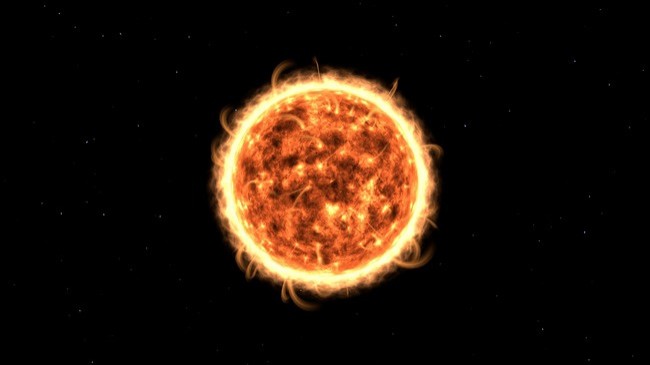The Sun is having a blast right now, literally. Marked by the emergence of a colossal sunspot name as the R3664, the Sun is said to be having increased activity. The colossal dark patch that was observed on the surface of the Sun has caught the attention of astronomers and space weather experts as it constantly expands to nearly 200,000 kilometers (123,300 miles) wide. This sunspot is being associated with the historic Carrington Event of 1859.

Growing Concerns Over Intensifying Solar Activity and Potential Geomagnetic Storms
Leading the charge in this solar spectacle is the Space Weather Prediction Center of the National Oceanic and Atmospheric Administration (NOAA), which has been keeping a careful eye on sunspot R3664's progress. Their latest data demonstrate this solar feature's significant expansion and growing magnetic complexity, which suggests a higher chance of solar flare activity in the days to come.
A strong X-class solar flare was released by the Sun earlier today at 5:13 a.m. EDT from the center of sunspot R3664. Shortwave radio blackouts occurred throughout Europe and Africa as a result of this eruption, which is categorized as an X2.2 flare. The amount of electromagnetic radiation generated was tremendous and was sent to space. Such phenomena emphasize that there are no typical or uniform solar activities and that the closer we are to the solar maximum - the Sun's 11-year activity cycle - the more unpredictable and dynamic solar events become.
ALSO READ : How Old Is Our Sun? How Long Will It Shine?
Historical Parallels and Modern Preparations
The significance of the sunspot R3664 being further emphasized because of its resemblance to the sunspot that was associated with the Carrington Event of 1859. This historic geomagnetic storm was named after the British astronomer Richard Carrington, in which it unleashed a wide range of chaos on Earth's communication systems, disrupting telegraph lines, and also ignited auroras visible as far south as Cuba and Hawaii.
While the geomagnetic storm's likelihood of a Carrington level is still uncertain, scientists and space agencies are already taking some proactive measures in order to enhance our preparedness and resilience in case a potential solar disruption occurs. Given our increasing reliance on technology and interconnected systems, the possible impacts of a giant geomagnetic storm cannot be undermined, emphasizing the importance of continuous research and monitoring activities.
The Exhibition of Solar Dynamics
Bounded by the scientific analysis and prognostications lies the inspiring spectacle and beauty of solar dynamics, which can be visible to those who are equipped with the proper safety gear. Sunspot R3664, with its vast expanse and wide magnetic complexity, presents a captivating sight for some amateur astronomers and space enthusiasts alike. Even though viewing the Sun directly poses significant risks to eye health, observing it safely through the use of solar observation glasses, just like what was used during the solar eclipse, offers a first-hand glimpse of the Sun's ever-evolving surface.
As sunspot R3664 continues its journey across the solar disk, together with a symphony of solar flares and eruptions, it serves as a reminder that the Sin is a dynamic and unpredictable star. While we appreciate the spectacle unfolding in our cosmos, let us also remain vigilant and be prepared for some of the significant potential impacts of solar activity on our technologically-dependent community.
RELATED ARTICLE : Earth's Violent Ending: Expanding Sun Will Swallow Our Planet in 6 Billion Years, Other Celestial Bodies Could Be Ground Into Dust
Check out more news and information on Space in Science Times.











